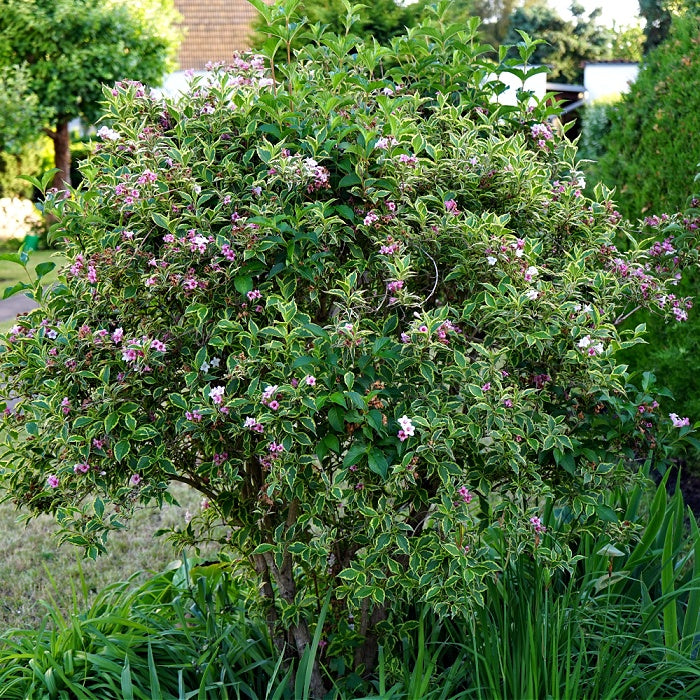Variegated Weigela For Sale
The Variegated Weigela - Weigela Florida ‘variegata ’span is a deciduous, densely foliated shrub, with profuse flowering in the spring. This variety of weigela is unique with its variegated foliage and received the Award of Garden Merit from the RHS for its beautiful charm.
The Weigela flamingo pink has an impressive shrub that boasts soft and pliable foliage. The leaves are a mild green color at the center with irregular edge borders that start as creamy white and mature to a lime green or pale yellow.
Plant Details Of Variegated Weigela Plants
Family: Caprifoliaceous
Hardiness Zones: 4 - 8
Light Requirement: Full sun to light shade
Water Needs: Moderate
Height: 4 - 6 feet
Spread: 4 - 6 feet
Growth Rate: Moderate to fast
Bloom Time: Late spring to early summer, often with a light rebloom in late summer
Flower Color: Soft pink, tubular flower
Wildlife Value: Attracts bees, butterflies, and hummingbirds
Variegation in Variegated Weigela can be caused by many things; however, with the Variegated Weigela, it is caused by chimeral variegation, which is the most common form of variegation in ornamental plants. The plant produces two genetically different cell layers. One has normal chlorophyll production, and the other has little to no chlorophyll production, resulting in creamy colored margins.
Flowers are produced profusely starting from late spring, after the leaves have emerged. After the spring flowering, it will flower again in late summer; however, more sparsely. The flowers are trumpet-shaped and can range from bright pink to white in color. Plant this shrub as a specimen or as a part of a mixed hedge to add variety of foliar attributes to your garden.
Landscape Uses and Maintenance for Variegated Weigela Plants
This shrub is easy to grow and low-maintenance. Due to the reduced chlorophyll content in the leaves, variegated varieties require more light to grow and produce beautiful blooms, so plant in a full sun location. Flowers emerge only on old wood, so pruning and shaping should be done just after flowering has completed.
It requires well-drained, slightly acidic to neutral soil; however, it can tolerate different soil types. Once established, it can be drought-tolerant. It has pest or disease issues that are serious.
What Makes Variegated Weigela Plants Unique?
Variegated foliage, attractive to pollinators, easy to grow. Add this variegated shrub to your garden to enjoy a unique foliar display year after year. Shop for Variegated Weigela shrubs online at TN Nursery. For 68 years, we have served the landscaping industry and homeowners with specimen plants.
Exposure
Red Weigela grows well in complete sun to part shade. It needs 4 hours of direct daylight daily for solid growth and colorful flowering. Some afternoon shade can be beneficial in areas with intense heat.
Height at Maturity
Under 10 Feet
Usage
Flowering
Shipped As
Bare-root
Ships
UPS
Planting Zones
4-8



